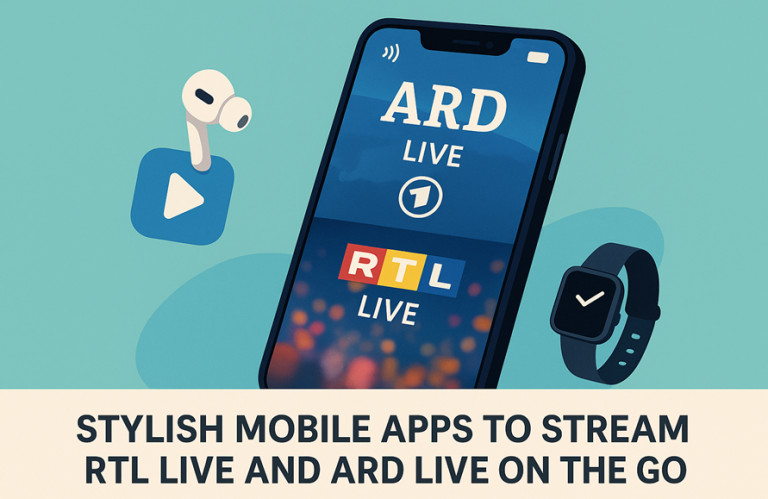Ever wish your written words could come to life with just a click? Now they can-thanks to smart text-to-speech tools that turn text into natural-sounding voice in seconds. Whether you’re teaching, creating content, or sharing ideas, these tools make your work more engaging and easier to understand. They’re great for boosting presentations, helping with language learning, or reaching people in new ways.
Ready to bring your words to life and make your content stand out? Keep reading to discover how these tools can work for you.
What is Natural-Sounding Speech?
Natural-sounding speech is the result of advanced text-to-speech (TTS) systems that replicate how real people talk. These systems now use powerful AI and machine learning tools to produce voices with natural rhythm and flow. Unlike older robotic-sounding outputs, today’s TTS voices feel more human and relatable.
Modern TTS can adjust tone, pitch, and inflection to match different emotions or speaking styles. This makes speech more expressive, fostering a deeper connection with listeners. As a result, listeners stay engaged, whether they’re using the speech technology for learning, accessibility, or entertainment.
Benefits of Using Text-to-Speech Tools
Using text-to-speech (TTS) tools in your projects brings real value, especially when it comes to improving communication. These tools make content more accessible for people with vision problems or reading challenges. Audio also allows for multitasking, letting users learn or absorb information while doing other tasks like driving or walking.
TTS supports different learning styles, especially for those who retain information better by listening. Adding voice to digital content also boosts engagement by making the experience more lively and interactive. That’s why choosing a tool that offers clear, natural-sounding speech is important for delivering a better and more inclusive experience.
How to Choose the Right Text-to-Speech Tool
Selecting the best text-to-speech tool can seem overwhelming with the variety of options available. However, a few key factors can guide your choice:
Voice Quality
Opt for tools that utilize advanced AI to produce realistic and lifelike voice outputs. These voices often sound warm and expressive, adding a human touch to digital content. Many users find them more relatable and pleasant to listen to.
Customization Options
Adjusting voice pitch, speed, and tone is an important feature in any TTS tool. Some platforms don’t offer this level of control. Choose one that allows you to align the voice with your content’s mood and style.
Supported Languages
Make sure the TTS tool supports the languages or dialects your audience needs. This is key when reaching people from different regions. This feature is particularly beneficial for global brands striving to connect with a broader audience.
User-Friendly Interface
A user-friendly interface makes it easier to create your text to voice content. It lets you format everything quickly and with less effort. This saves time and improves your overall experience.
Top Online Tools for Natural-Sounding Speech
Several online platforms excel at providing natural-sounding text-to-speech conversions. Here are a few noteworthy options to consider:
Google Cloud Text-to-Speech
Google’s service uses deep learning to turn text into speech that sounds natural and clear. It offers over 30 voice options and supports many languages. This makes it a flexible tool for both personal and professional projects.
Amazon Polly
Amazon Polly provides a wide selection of lifelike voices for a more realistic audio experience. It’s a popular choice for businesses that want their apps to speak naturally. This helps improve user interaction and engagement.
IBM Watson Text to Speech
IBM’s tool is designed to produce voices that sound human and natural. It includes customization options to fine-tune speaking styles and tones. This makes it easier to match the voice to your specific content needs.
Natural Reader
Natural Reader is a strong choice with a user-friendly interface, perfect for beginners. It supports several languages, making it useful for diverse audiences. Users can also pick from a range of voice options to suit their needs.
How to Convert Text to Natural-Sounding Speech
Turning text into speech is quick and easy. First, choose a TTS tool and paste your text into the box. Then pick a voice and language that fits your content.
You can adjust the pitch, speed, or tone if the tool allows. Click the convert button when you’re ready. After that, download or share your audio file.
Applications of Natural-Sounding Speech
Text-to-speech technology offers applications across various domains:
Education
Teachers utilize TTS in classrooms to read assignments aloud. It offers extra support for students who learn better by listening. This is especially helpful for dyslexic students, making reading more accessible.
Business
Professionals frequently employ TTS for voice-overs across diverse projects. It works well for presentations, tutorials, and marketing content. This adds clarity and improves the overall experience for the audience.
Entertainment
TTS technology plays a big role in enhancing storytelling across different media. It brings audiobooks and video games to life with engaging narration. This creates immersive experiences that keep audiences hooked.
Assistive Technology
TTS tools are essential for people with disabilities. They help with reading and communication in daily life. This fosters a more inclusive, supportive environment.
Future Trends in Text-to-Speech Technology
The field of text-to-speech is rapidly evolving. Here’s what to expect in the near future:
A.I. and Machine Learning Integration
As A.I. keeps improving, TTS voices will sound even more natural and lifelike. Future voices may include unique personality traits for added realism. This will boost user engagement and allow more personalized experiences.
Voice Cloning
Some TTS tools are now offering voice cloning features. This allows users to replicate real human voices with accuracy. It opens up new ways to create personalized and unique content.
Multimodal Interaction
Future TTS applications may combine text, speech, and visuals into one smooth experience. This integration will work across different devices and platforms. It will make digital interactions more connected and engaging.
Bring Your Words to Life with Text-to-Speech
Turning text into clear, natural-sounding audio is now fast, easy, and useful for all kinds of content. With so many online tools out there, it’s simple to find one that fits your needs and boosts how you share information. Whether you’re teaching, creating, or building something new, these tools can help make your message stronger and more engaging.
Start using text-to-speech today and see how it can level up your work. For more tips and ideas, check out the rest of our blog.




